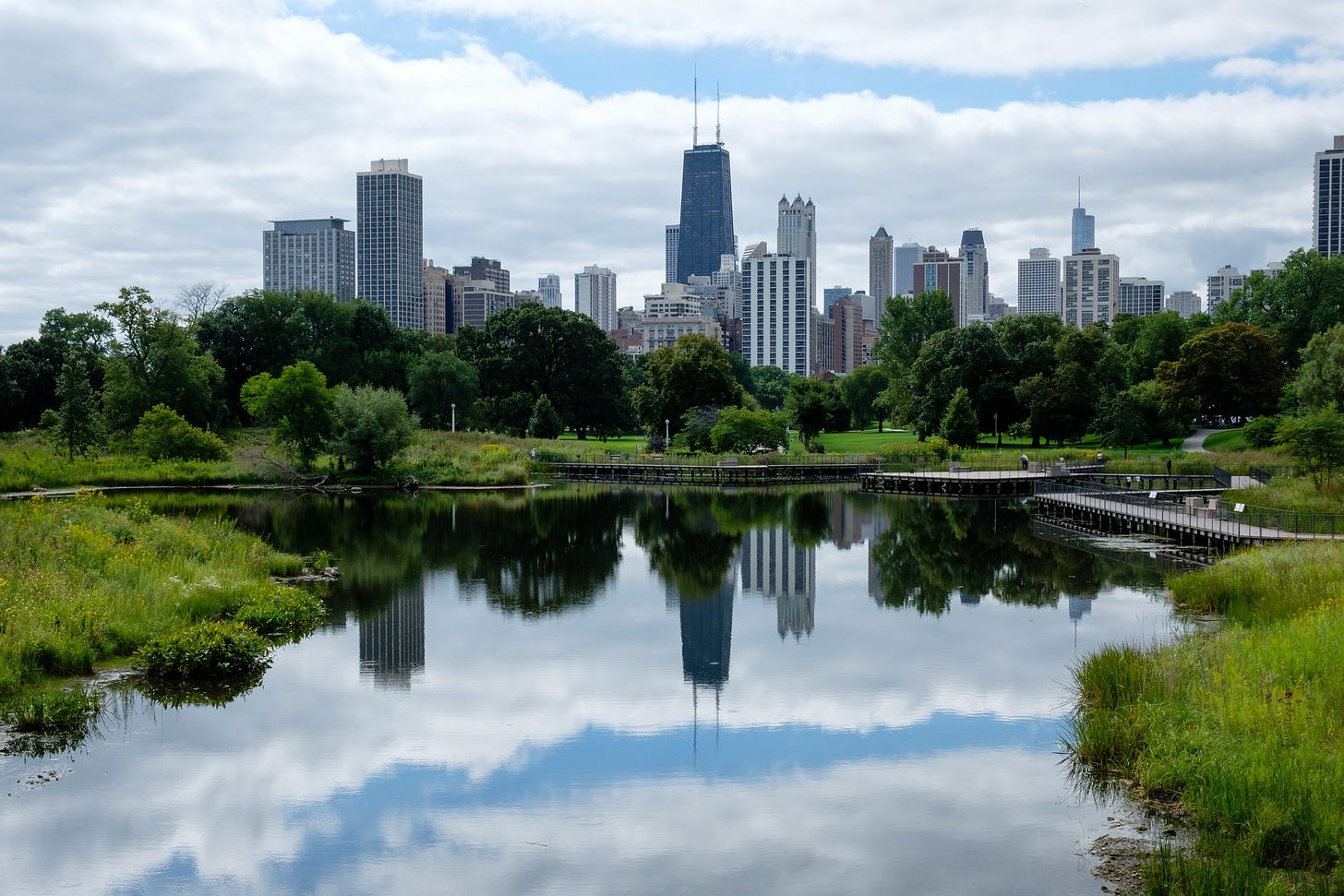
On Saturday, I biked home from brunch on a beautiful, sunny afternoon. But with nothing to do the rest of the day, I was looking down the barrel of some serious Saturday scaries.
That’s when I saw one of my friends and his buddy at a park near my bikeshare dock. I meant to just say hi, but eventually sat down and helped polish off a bottle of wine before walking with them to a patio for another drink. It was the perfect way to spend the afternoon — and also something that only happens in a city.
That cities are social hubs is nothing new. Since their beginning, cities have brought people together from all walks of life, while being designed to encourage social interaction.
My bikedock, for example, is in a very dense area where it’s easiest to pick up and return bikes (and subsequently run into friends).
Compare this to the suburbs: After brunch, sprawling infrastructure would’ve forced me into a car, which I would’ve drove to my driveway and walked several feet to my door (i.e., not running into friends).
What’s this got to do with climate change? By packing people together, cities are not only great for social interaction but also great for the Planet.
With tight street grids, high-rise apartments, and mixed-use zoning, many cities are dense enough to encourage carbon-free transit, like walking and biking, while requiring less space and, therefore, less energy to heat and cool buildings. So it shouldn't be surprising that city dwellers spew 50% less emissions compared to the national average, while those who live in the suburbs emit twice the average.
Of course, no city is the same. Houstonians and Atlantans, with their sprawling, car-centric infrastructure, have a much larger carbon footprint than Bostonians or New Yorkers, whose cities are much more compact.
But despite differences, many cities can and do learn from each other — to be better for their residents and the Planet.
New York City looked at congestion pricing models in London and Milan.
Charleston learned about flood-reduction measures from Amsterdam.
Washington, D.C., took inspiration from subways in Stockholm and Berlin.
I’ve been thinking a lot about cities because of the Trump Administration’s attacks on all things climate, from slashing environmental protections to tearing up climate investments to propping up dirty (and failing) energy sources like coal.
Despite these blatant attacks on our natural environment, cities give me hope because they can advance climate action on their own (though federal funds certainly help). As businessman and former New York City Mayor Michael Bloomberg writes in Climate of Hope: How Cities, Businesses, and Citizens Can Save the Planet:
“America’s ability to meet our Paris climate pledge doesn't depend on Washington. It depends on cities continuing to protect their residents and invest in the future. It depends on businesses continuing to seek ways to save and make money… And it depends on citizens continuing to demand cleaner forms of energy that won’t harm their health and pollute their communities.”
This is more important as cities grow: Currently, 80% of the world’s economic activity happens in cities, and by 2050, 70% of the world’s population is expected to live in cities.
The catch is that cities have struggled to regain their footing post pandemic, and nothing guarantees that these trends continue. With more people working from home, business districts and public transit systems are suffering. Perhaps more importantly, U.S. suburbs are growing at faster rates than cities (and suburbs, as I’ve written before, are bad for the Planet).
Of course, cities have problems — from affordability to crime to space — but those problems largely exist everywhere. And too often, cities are subject to the whims of state and federal lawmakers, who get in the way of local climate policy.
But still, there’s something beautiful about cities that you can’t find in the suburbs or the rural countryside: I saw it Saturday outside my bikeshare station, and again on Wednesday, running into friends at the Tidal Basin.
People are the lifeblood of cities, and if the federal government keeps attacking the environment, we need more people to stay in and move to cities. So give them a chance. Cities may not be for everyone, but they certainly are for the Planet.




I love cities and grew up in Brooklyn, but I don’t think they always produce the social interactions you describe. The anomie of an apartment block is an old cliche. I’m currently living in Provincetown, which only has about 2,500 people in the off-season, and it’s the most tightly knit community I’ve ever been a part of. The houses are definitely close together and everything is walkable and bike-friendly, but on a much smaller scale than. Towns across the US used to be more like this, and villages in England (where I’ve also lived) still are. The issue isn’t cities vs suburbs, it’s about making all communities more dense, livable and human-scale, rather than building them for cars.
It's worth giving some credit to Washington, D.C. (and certain of its suburbs, particularly Arlington), which has done a decent job of building the housing units to actually allow people to live in the City in the last fifteen years or so. It's no Houston or Austin, but it also is not my sclerotic, expensive, New York. If we want to encourage people to live in cities and have the bike-sharing, park-hanging, productive-dynamic lifestyles that we and so many others love, we need to actually permit the building of enough housing to accommodate the people who would want to live there. Otherwise, those same people, those same potential neighbors, colleagues, and friends, will end up in Houston or--god forbid--Ashburn, where we've allowed new houses to be built.